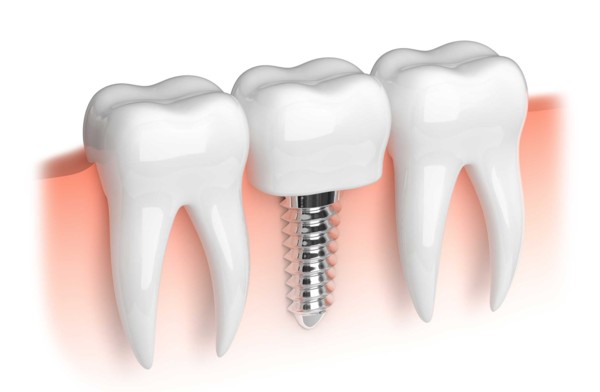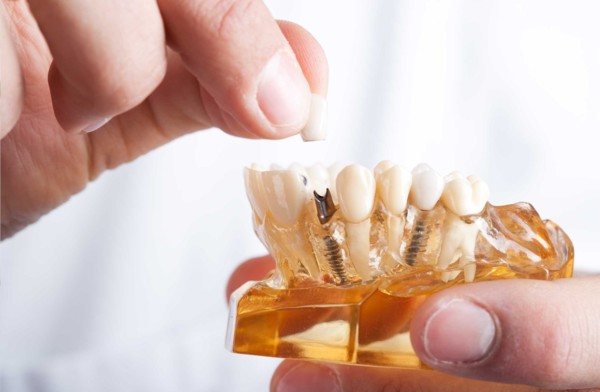Dental Implants

A dental implant is an artificial tooth root made of titanium which replaces the missing tooth. The dentist inserts the implant into the jaw bone where the titanium then integrates with the bone. Just like your tooth root did before, the implant then builds a stable foundation for the crown, which will become the visible part of your new tooth.
Dental implants are very small, normally around 10 mm long and only 3-5 mm wide at the top.
Here at Church Street Dental Practice we use Nobel Bicare system. Nobel bicare are leading experts in the field of implant technology and design who have many years of scientific research and development invested in their products. We believe that with the use of such a high end product our patients are provided with a safe and long lasting dental solution.
Replacing Missing Teeth
Dental crowns and bridges are also known as replacement teeth. They can be made of different material and are used to replace any tooth that is missing or beyond repair. Beforehand, a dental laboratory designs each replacement tooth individually so that it matches your bite and the look and feel of your other teeth.
A bridge can restore gaps between teeth. The outer parts of the bridge are placed on existing teeth next to the tooth gap, while the middle part replaces the lost tooth. Bridges can also be used on dental implants, usually when two or more teeth are missing.

Bridge or Dental Implant? - A comparison
To restore missing teeth, your dentist can use a bridge. It consists of several replacement teeth that will literally bridge the gap. But using bridges on natural teeth can have several serious disadvantages:
Certain types of bridges, made of metal and covered with porcelain, can lead to visible black metal lines at the rim of the bridge when your gums keep receding. An all-ceramic bridge can provide an alternative in such cases. Speak to your dentist if an all-ceramic bridge might be a good solution for you.
Bridges require a grinding down of neighboring healthy teeth. Bridges are anchored to adjacent teeth to keep them in place. This means, however, that these healthy neighboring teeth must first be reduced in size.
When you lose teeth, it disturbs the interplay between teeth and bone. Gum and bone are no longer stimulated well enough due to missing teeth, so your jaw bone starts shrinking and your gum pulls back.
To avoid grinding down teeth and effects on jaw bone and gum, your dentist can replace the tooth root to create a completely new tooth with a dental implant.
Speak to your dentist to find the solution that’s best for you.


